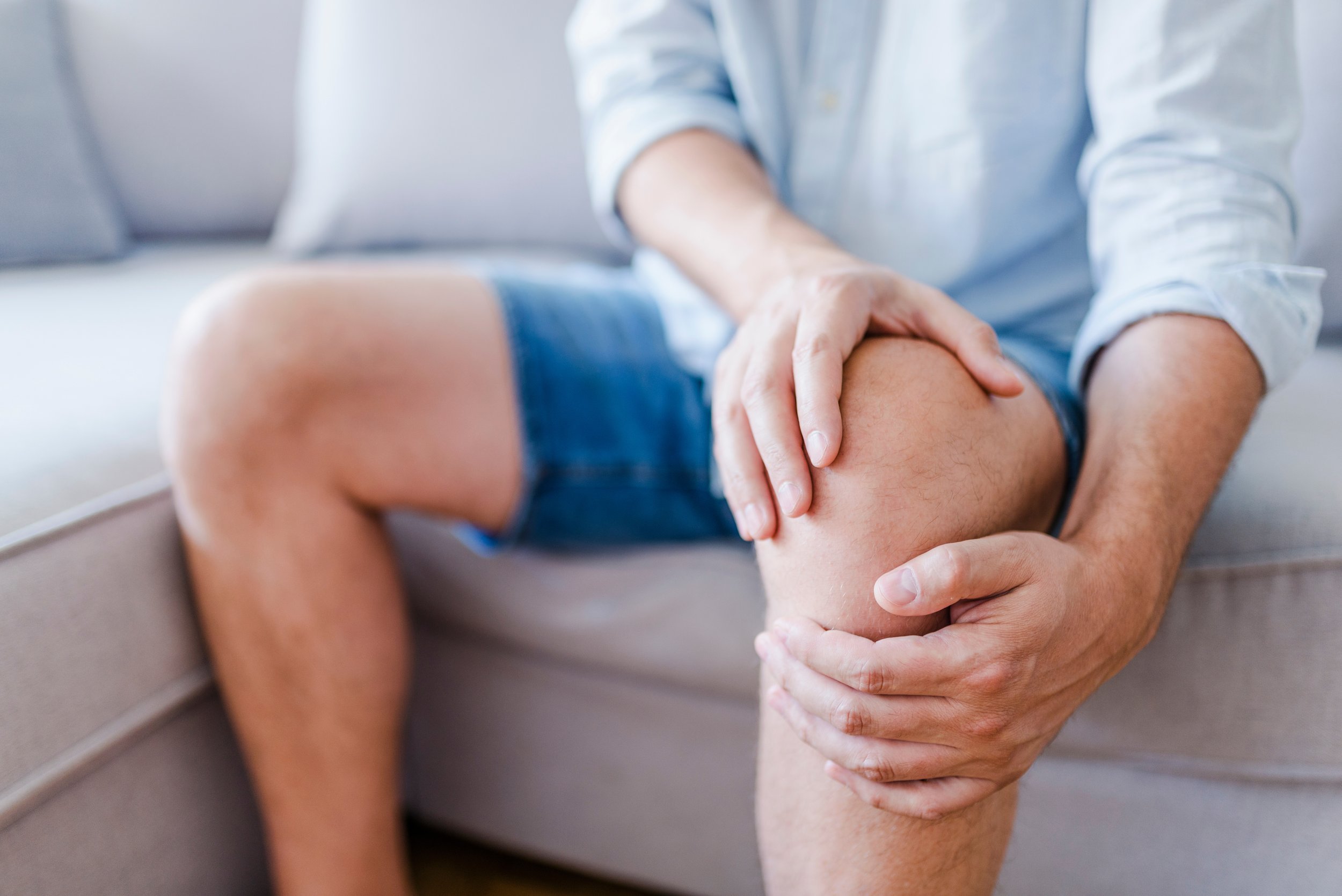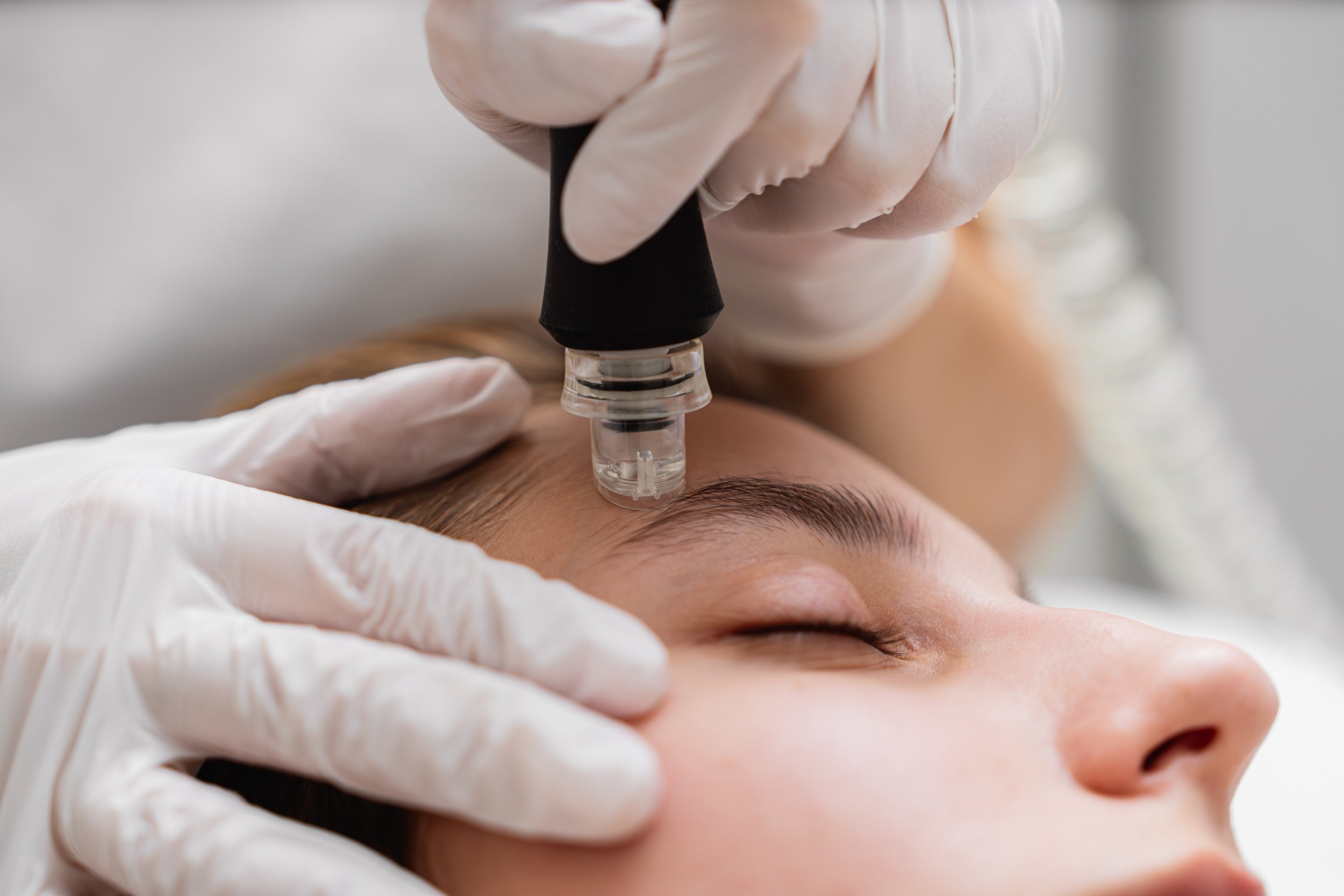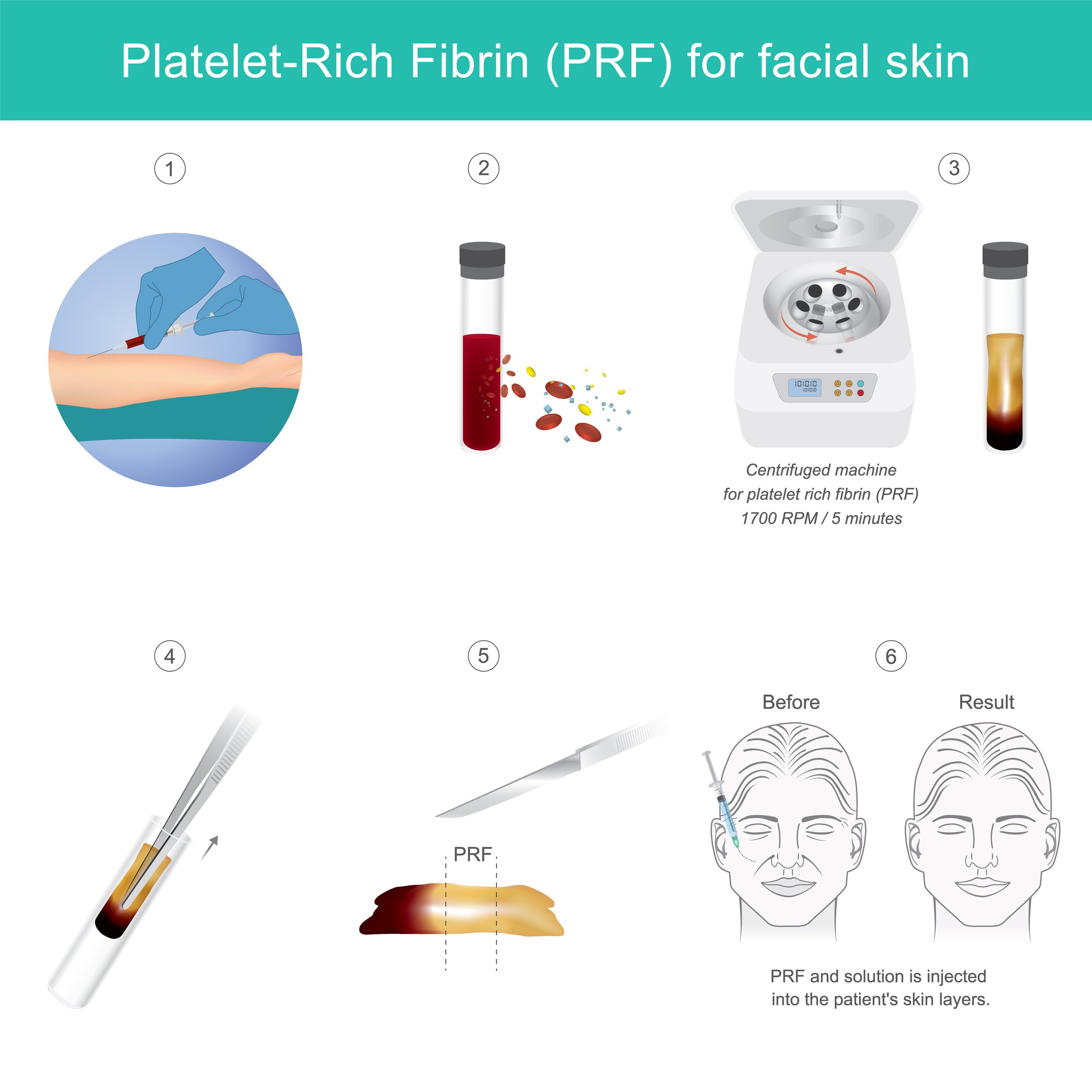
Platelet-Rich Fibrin (PRF) Injections

What are platelet rich fibrin injections?
Platelet rich fibrin (PRF) injections have become a popular treatment option for individuals suffering from knee arthritis, peripheral neuropathy, tendon and ligament injuries, rotator cuff injuries, muscle injuries, joint pain and inflammation, and more.
The procedure involves extracting a small amount of blood and then separating its components to obtain platelet rich fibrin, a substance that is chock-full of growth factors and has healing properties. Then it’s injected directly into the knee joint or other part of the body to help reduce inflammation and pain while promoting healing.

PRF for Skin
Platelet rich fibrin (PRF) is increasingly utilized in skin rejuvenation procedures for its regenerative properties. At MIMIT Health, PRF is combined with microneedling (vampire facial) to enhance skin tone and texture, promoting a more youthful appearance by stimulating collagen production and facilitating healing. Additionally, PRF is effective in reducing the appearance of dark circles under the eyes, targeting the delicate skin in that area to improve overall brightness and reduce pigmentation.

PRF for Pain or Injuries
At MIMIT Health, Platelet Rich Fibrin (PRF) is employed as a therapeutic option for treating various sports injuries, tendon and ligament injuries, pain from neuropathy, and osteoarthritis. PRF harnesses the body's own healing properties by concentrating growth factors, which can accelerate tissue repair and reduce inflammation. In the case of sports injuries, PRF aids in promoting recovery of damaged tendons and ligaments, enhancing the healing process while minimizing downtime. For patients suffering from neuropathic pain and osteoarthritis, PRF injections can alleviate discomfort by improving blood flow and facilitating tissue regeneration. This innovative treatment modality offers a natural and effective alternative for individuals aiming to alleviate pain and enhance mobility.

How are PRF injections performed?
During the procedure, a small amount of blood is drawn from the patient's arm and spun in a centrifuge. This separates out the platelet-rich fibrin, which is then injected directly into the affected area.
When will I start seeing improvements?
The effects of PRF injections are typically gradual, with noticeable improvements often observed several weeks after the procedure.
Potential PRF injection side effects
Infection
One potential complication following a platelet-rich plasma injection is infection. This can occur if proper sterile techniques are not followed during the procedure or if the injection site is not adequately cleaned before the injection. At MIMIT Health, our providers ensure infection doesn’t occur.
Nerve Injuries
Nerve damage can occur if the injection is not administered correctly, leading to symptoms such as pain, numbness, or weakness in the affected area. However, we ensure the injections are done correctly. Our Regenerative Care provider, Dr. George Antonopoulos, DNP-FPA, APRN-BC, MSN-FNP, has a lot of experience with this procedure.
Pain and swelling at the injection site
Some patients may experience temporary inflammation and pain after the procedure, which is part of the natural healing response. Patients are still able to leave the office and return home on the same day.
Recovery and Aftercare:
Following Advice:
It is important to follow the specific advice provided by our healthcare provider. Follow post-treatment instructions closely for optimal recovery and healing.
Managing Discomfort:
After the injection, the area may be iced to reduce any swelling or discomfort, and you'll be given post-procedure care instructions. Over-the-counter pain relievers can be used to alleviate discomfort, but it is advised to avoid non-steroidal anti-inflammatory drugs (NSAIDs) as they may interfere with the healing response.
Returning to Activities:
Patients can generally resume their regular activities shortly after the procedure, but strenuous use of the treated area should be avoided for a few days to a week. As the healing process progresses, physical therapy or rehabilitation exercises may be introduced.
Why you might feel under the weather after your PRF injection
Have you ever wondered why you might feel a bit "off" after getting a PRF (Platelet-Rich Fibrin) injection for your achy joint? Don't worry, it's not because tiny gremlins have invaded your body - it's actually a sign that your immune system is working overtime!
The Healing Party in Your Joint
Imagine your joint as a construction site, and the PRF injection as a crew of enthusiastic workers arriving to fix things up. Here's what's happening:
The Arrival of the Repair Crew: When the PRF is injected, it's like a flood of tiny construction workers (platelets and growth factors) rushing to the scene.
Setting Off the Alarm: This sudden influx of activity triggers your body's immune system. It's like your internal security system saying, "Hey, what's going on here?"
The Immune System's Response: Your body sends in its own team (white blood cells) to investigate and assist with the healing process.
Why You Might Feel Flu-ish
This flurry of cellular activity can lead to some temporary side effects that might remind you of the flu:
Fatigue: Your body is diverting energy to heal the injected area.
Mild fever: A slight temperature increase is your body's way of creating an optimal environment for healing.
Achiness: The inflammation process can cause general discomfort.
The Science Behind the Symptoms
Scientifically speaking, what you're experiencing is a controlled inflammatory response. The platelets in the PRF release cytokines and growth factors, which attract healing cells to the area. This process, known as chemotaxis, can lead to a systemic response that mimics flu-like symptoms.
Embracing the Healing Process
Remember, these symptoms are generally mild and short-lived. They're actually a good sign that your body is responding to the treatment and kickstarting the healing process. It's like your body is throwing a "renovation party" in your joint!So, the next time you feel a bit under the weather after your PRF injection, just think of it as your body's way of saying, "Renovations in progress. Please pardon our dust!"




